Explore the mechanism of Astragalus membranaceus and Poria cocos drug pair in improving immunity based on network pharmacology
- PMID: 38905394
- PMCID: PMC11191921
- DOI: 10.1097/MD.0000000000038531
Explore the mechanism of Astragalus membranaceus and Poria cocos drug pair in improving immunity based on network pharmacology
Abstract
The aim of this study was to investigate the key targets and molecular mechanisms of the drug pair Astragalus membranaceus and Poria cocos (HFDP) in the treatment of immunity. We utilized network pharmacology, molecular docking, and immune infiltration techniques in conjunction with data from the GEO database. Previous clinical studies have shown that HFDP has a positive impact on immune function. We first identified the active ingredients and targets of HFDP from the Traditional Chinese Medicine Systems Pharmacology database and the Swiss Target Prediction database, respectively. Next, we retrieved the differentially expressed genes (DEGs) related to immunity from the GEO databases. The intersection targets of the drugs and diseases were then analyzed using the STRING database for protein-protein interaction (PPI) network analysis, and the core targets were determined through topological analysis. Finally, the intersection genes were further analyzed using the DAVID database for Gene Ontology (GO) and Kyoto Encyclopedia of Genes and Genomes analyses. Subsequently, by analyzing the expression and prognostic survival of 12 core targets, 5 core target genes were identified, and molecular docking between the hub genes and immunity was performed. Finally, we used the CIBERSORT algorithm to analyze the immune infiltration of immunity genes In this study, 34 effective ingredients of HFDP, 530 target genes, and 568 differential genes were identified. GO and KEGG analysis showed that the intersection genes of HFDP targets and immunity-related genes were mainly related to complement and coagulation cascades, cytokine receptors, and retinol metabolism pathways. The molecular docking results showed that the 5 core genes had obvious affinity for the active ingredients of HFDP, which could be used as potential targets to improve the immunity of HFDP. Our findings suggest that HFDP is characterized by "multiple components, multiple targets, and multiple pathways" in regulating immunity. It may play an essential role in regulating immunity by regulating the expression and polymorphism of the central target genes ESR1, JUN, CYP3A4, CYP2C9, and SERPINE1.
Copyright © 2024 the Author(s). Published by Wolters Kluwer Health, Inc.
Conflict of interest statement
The authors have no conflicts of interest to disclose.
Figures
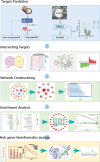
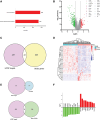
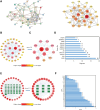

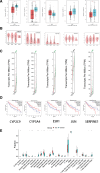

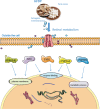
References
-
- Parkin J, Cohen B. An overview of the immune system. Lancet. 2001;357:1777–89. - PubMed
-
- Shi ML, Yan MQ, Su J, et al. . Effects of Dendrobium officinale ultrafine powder on sub-health mice induced by unhealthy lifestyle based on neuroendocrine immune system. Food Funct. 2022;13:12436–50. - PubMed
-
- Riccioni G, D’Orazio N, Menna V, et al. . Fat soluble vitamins and immune system: an overview. Eur J Inflamm. 2003;1:59–64.
-
- Sadighi Akha AA. Aging and the immune system: an overview. J Immunol Methods. 2018;463:21–6. - PubMed
-
- Putnam C, Kondeti L, Kesler M, et al. . Modulating the immune system as a therapeutic target for myelodysplastic syndromes and acute myeloid leukemia. Biochem Cell Biol. 2023;101:481–95. - PubMed
MeSH terms
Substances
LinkOut - more resources
Full Text Sources
Miscellaneous

